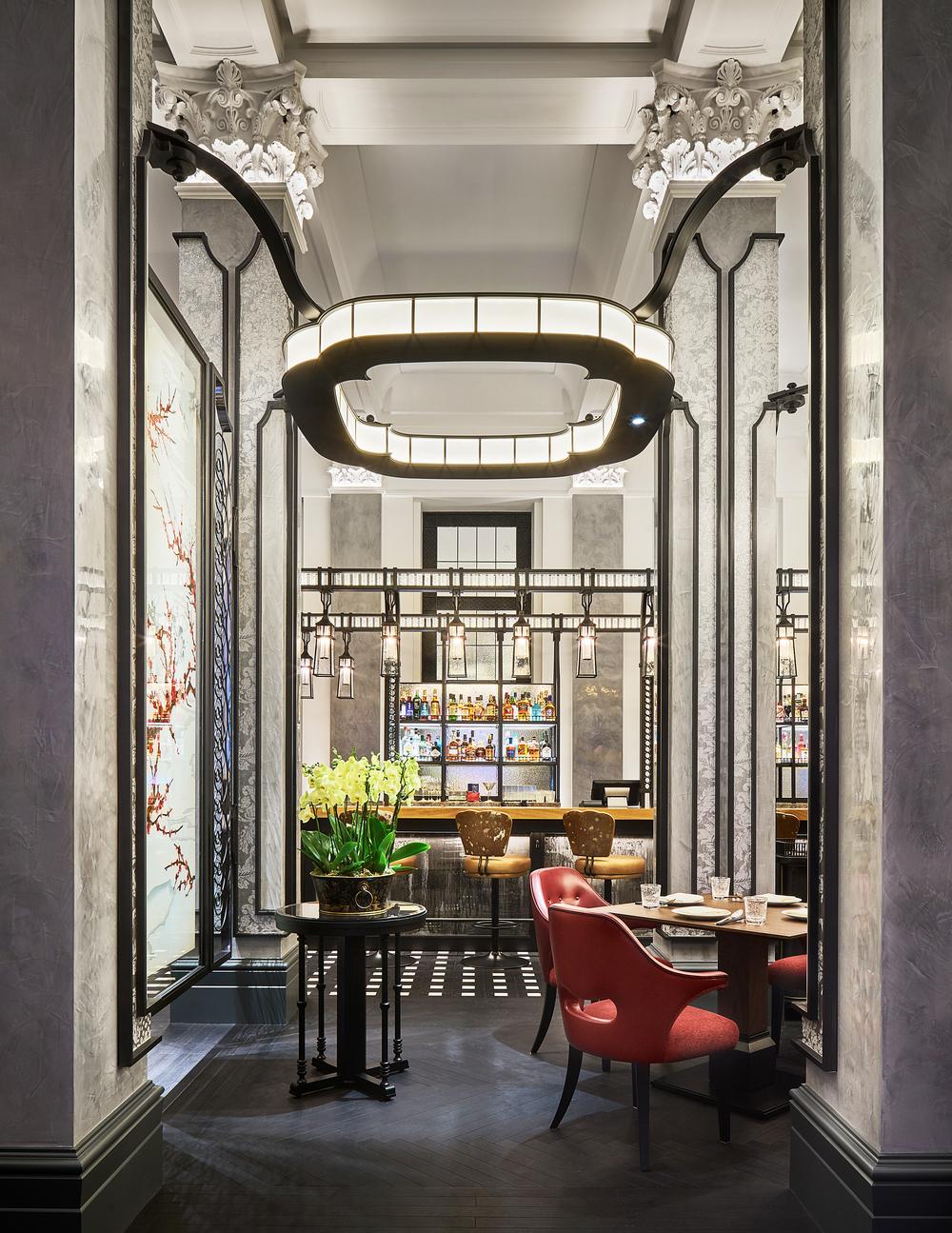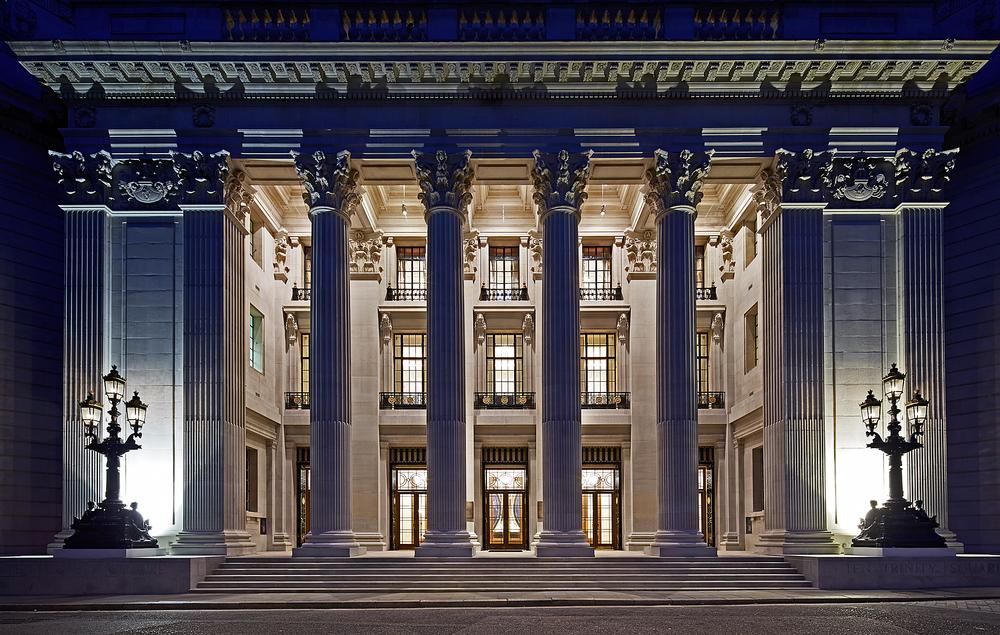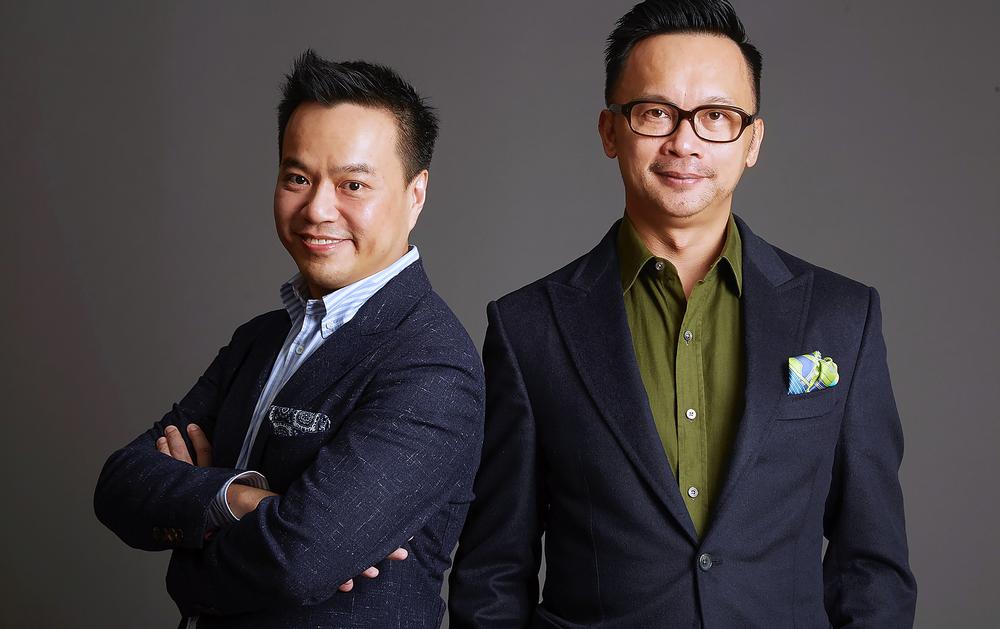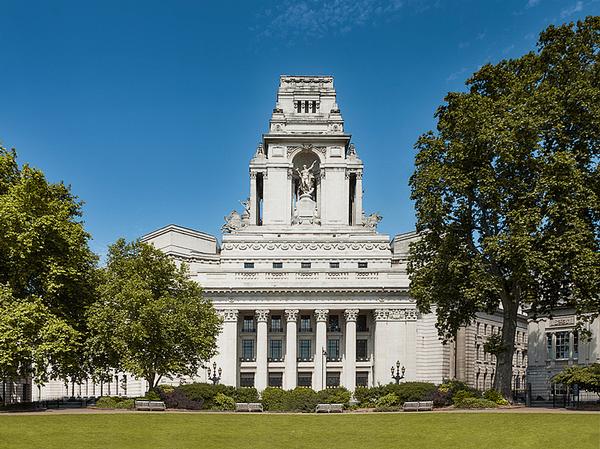features
Interview: Ed Ng on creating a stylish restaurant for Four Seasons' London landmark hotel
The interior designer talks to Kim Megson about creating Asian restaurant Mei Ume within a listed building, the joy of F&B design and the art of planning an ‘Instagram moment’
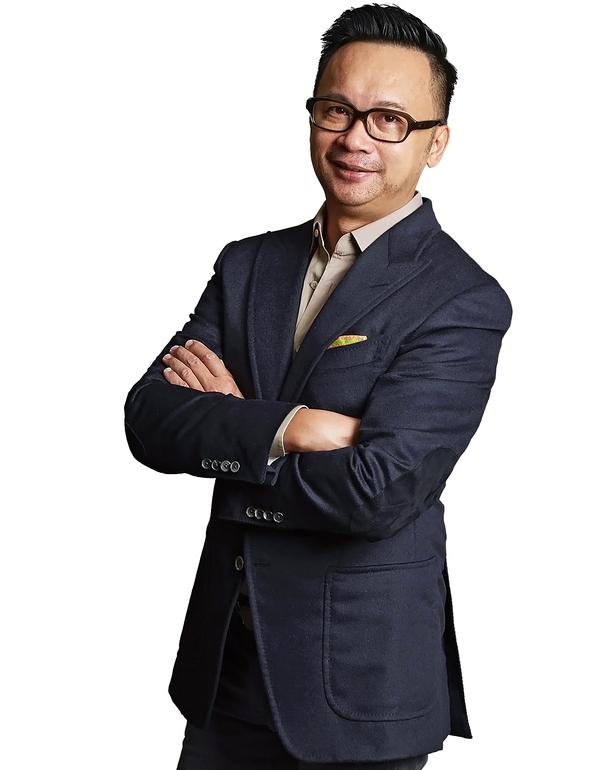
When interior designer Ed Ng and architect Terence Ngan received a brief to design a bespoke Asian restaurant in one of London’s historic architectural landmarks, they jumped on the first plane to the UK.
Based in Hong Kong, where opportunities to renovate historic buildings are rare, the founders of AB Concept were excited about the chance to create a unique new concept within a listed building with a long and fascinating past.
Two years on, and the duo have finished Mei Ume for the Four Seasons Hotel London at Ten Trinity Square, housed within the former Port of London Authority HQ.
The high-end eatery, which takes its name from the Chinese and Japanese words for ‘plum blossom’, is AB Concept’s first UK project.
Ng and Ngan have collaborated with the likes of Rosewood Hotels, Mandarin Oriental and W Hotels, but this was a challenge like no other. Here Ng reveals the process of fusing Eastern and Western heritage, and the benefits of working in partnership.
What was your starting point when developing the concept for the Mei Ume restaurant?
We got the design brief from Four Seasons, jumped straight on a plane to London and came to look at the site. We were the last consultants on board, so the basic concept for an Asian restaurant serving both Japanese and Chinese food had already been decided. It was our job to develop that idea and bring it to life.
The first thing we did was sit down with the heritage building expert and discover what we could and couldn’t do in this amazing space. The next step was to find the right Asian story to bring into this very Western building.
This can be a challenging process, particularly in a very old city where you come across literally hundreds and thousands of storylines. Luckily, we had the history of this building to inspire us. It used to be London’s Port of Authority HQ and is a stone’s throw away from Tower Bridge, so we immediately began thinking of stories of Anglo-Chinese trading: the merchants and their silk, ceramics and tea, the way trading allowed them to influence each other’s cultures. That became a very strong narrative for us.
From there we sought other ways to bring in references to Japanese and Chinese culture, from the artwork to materials such as bamboo. There are references to the plum tree, which has a beautiful poetic meaning in the literature of both countries. It’s one of the very few species that blooms in the harsh winter, so it symbolises an idea of achieving against all odds.
How much of a challenge was it to work within the restrictions of this grade II* listed building?
We rarely have the opportunity to renovate historic buildings in Hong Kong; instead we have tonnes of super brand new curtain wall buildings. It was a pleasure working on a project like this, where you really have to understand the building and look around for inspiration – such as a colour scheme and motifs – that you can bring inside. You have to be adaptable of course and there are constraints to what you can do.
For example, in a restaurant, light is very important. No matter how beautiful the design and the cuisine, if the lighting is flat and gloomy it won’t stimulate your appetite. Normally you’d use spotlights to get the right type of lighting, but that wasn’t possible at Mei Ume because of the beautiful coved ceiling. I didn’t want to completely gut that feature, so we had to use our creativity and hide uplighters around the Corinthian column cavities and add halo lights inspired by celestial cloud motifs. These solved the lighting problem, and also created our Instagram moment when guests first enter the restaurant.
How important is it these days that you have those ‘Instagram moments’?
It’s always been important in design; it’s just the terminology that’s changed. Now, instead of the very boring ‘focal point’, we say the ‘Instagram moment’. A good designer, or even a good fashion designer like Karl Lagerfeld, has photographic eyes and an understanding of cinematography or videography. It’s very important how you frame the space through composition and layering. Everything counts. That’s always been true; the difference now is that people pay more attention to your work because of social media. If someone with influence takes a picture of a space, millions of followers will see it almost instantly.
In the old days, you’d take some ‘hero shots’, send them to a magazine and people might see them a few weeks or months later. Now the next second your design is on someone’s iPhone and they’re ready with a thumbs up or down! That’s something we have to be aware of, but of course you can’t forget that you’re designing for the people who will actually occupy the space.
How do you want people occupying your restaurants to respond to the space?
We want to create comfortable, tactile spaces. A restaurant is not meant to be a museum. Guests should feel free to touch the walls, feel the materials, explore the space. It’s a sensory experience.
We love working closely with chefs to exchange ideas, because there are a lot of similarities in the way designers and chefs see things. That’s always a fun process. We have to eat all this Michelin-quality food to make sure we fully understand the concept. There’s lots of: ‘‘Mmm I don’t quite have the inspiration yet, can I try another dish!’
I think of all hospitality design, Terence and I feel F&B is the most fun. You can really be creative, and it’s where you get all the limelight!
You get a very good budget too, because the hotel restaurant is a very strong profit-generating vehicle that can still be packed when all the other public areas are empty.
What’s the working relationship like between you and Terence? Do you take on different roles?
We work on literally every project together. I think it’s a very interesting partnership because, while Terence is trained as an architect, he looks at things like materials and tactility in very close detail. That surprised me when we first met. Likewise, I’m an interior designer, but I also look at things in a very bold architectural way, including the form and the space. Terence and I have pretty big overlapping interests and that’s why we work so well together.
At the same time, I think one of the most valuable things for a partnership is being able to be really blunt and brutal when there is something you don’t feel is right.
Without needing to be diplomatic, you can say something is rubbish, and you’re listened to. You can be very to the point in a way you’d never be with a client or with your employees. This kind of candid challenge can be very useful.
At the same time, you have to be responsible, so if I say ‘this is not working’, I can’t just turn away. The ball is back in my court to suggest a solution.
With Terence and I, there’s a lot of debate, but eventually we reach a very good conclusion. We never like to say ‘compromise’, but we definitely move towards commonly reached solutions.
What would you identify as his greatest strength and what do you think he would identify as your greatest strength?
Terence’s strength is definitely form and spatial planning. His training actually allows him to plan towns – so he’s good at everything from the façade to the big picture or masterplan. With a project like Mei Ume, he can look at a heritage building, see the constraints and find the design solutions that address all the functionalities.
His gift is to consider layouts and all that, but also to make sure it’s spatially beautiful. All architects need to be control freaks to some extent, and that’s true of Terence. Even I’m not allowed to touch the floor plans!
I think my strength is in talking with clients and being at every single important meeting. It’s very important to understand their expectations. We want to be highly bespoke designers, and I think I’m good at delivering that.
We’re not the kind of designers that have our own set styles. We’re adaptable.
It’s that ability that has allowed us to work with W Hotels in Beijing and now in the Algarve, but at the same time work in the Mandarin Oriental the Four Seasons and the Rosewood. If I insist on a singular aesthetic, that’s not going to work. Instead, I’m good at using my design methodology and my knowledge to create something that still has our DNA, but also meets the needs of the brand.
Are you seeing an increased demand for unique designs in hotels with well-known brand identities?
It depends on what brand you’re working for. Rosewood’s slogan is ‘A Sense of Place’, for example, so of course it needs to be unique. If you’re staying with them in the Hotel de Crillon, you want to feel you’re right on the Place de la Concorde in Paris. If you’re in London, you want to feel like you’re in London. So while there are elements that unite hotel properties, you don’t want a cookie cutter approach. If you do that, the feeling is ‘okay, it’s just another nice hotel.’ We don’t want to create ‘just another’ anything.
Can you remember the first hotel that you stayed in that wowed you?
Definitely the Park Hyatt in Tokyo. I feel that was a game changer. Everyone still talks about it, even though it opened more than 20 years ago. Back then people were considering luxury for the first time, and their vision was of beautiful materials and a peninsula style. Then this hotel opened and they said ‘there are no mouldings or expensive marbles, but it feels so special and so relaxing.’ It redefined luxury.
What do you think is the biggest challenge facing hospitality designers?
The duration of projects is very, very challenging. We were involved with Mei Ume for three years, but some projects last much longer than that. We have been working on a project for the Conrad Hotel in Hang Cho, China for close to eight years. One of my staff literally started the project when she was single, has since been married and now has a son preparing for primary school, and still the project is ongoing. Eight years is a long, long time in design. Even the specification of some of the fabrics we wanted no longer exist! And of course, your aesthetic changes.
If I were to ever feel that I’d change nothing about my work from eight years ago, there’d be something wrong with me.
As designers, we always need to design for the future because people are always changing the way they live, work and relax. But if it takes years for a project to materialise, and then the finished space must be relevant for years after that, it becomes very hard. It means these days hospitality designers all have to be fortune tellers.
What are you working on next?
We are currently designing the W Algarve in Portugal and a seafood restaurant, the Paper Moon Giardino, in Milan. Both are very exciting, but perhaps our biggest forthcoming project is the renovation of the Beijing Hotel: a monumental 100-year-old building, right next to the Forbidden City. It used to be a Marriott but their tenancy expired and it’s being relaunched to celebrate the 70th birthday of the Chinese Government. We’ll be refreshing the F&B spaces for a new brand called Nuo.
During the early 1960s there were Hyatts and Hiltons all over the world, because Americans travelled. Now it’s the Chinese who travel, so that’s why it’s time for the Chinese to really start building their own international brand of hospitality.
Our brief is to avoid mimicking what the Beijing Hotel was like in the past, but also to understand the culture of the building and the location. So we have 1.3 billion Chinese people behind us, looking at what we’re going to do to this hotel!
The world of AB Concept
Ed Ng and Terence Ngan began their professional partnership in 1999. Since then they have worked on a huge number of stylish hospitality projects, from hotels and restaurants to bars and spas. Here is a snapshot of some of their completed interior projects
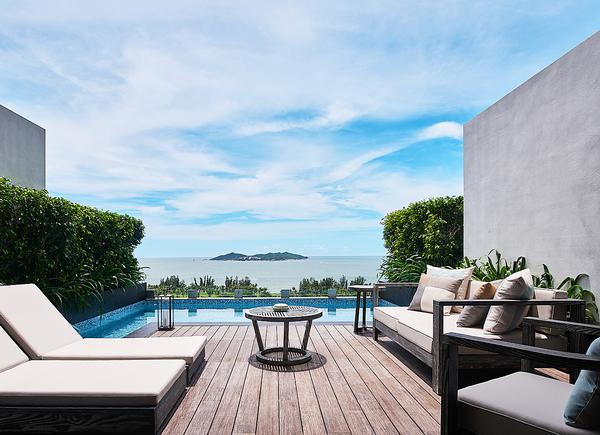
Rosewood Sanya
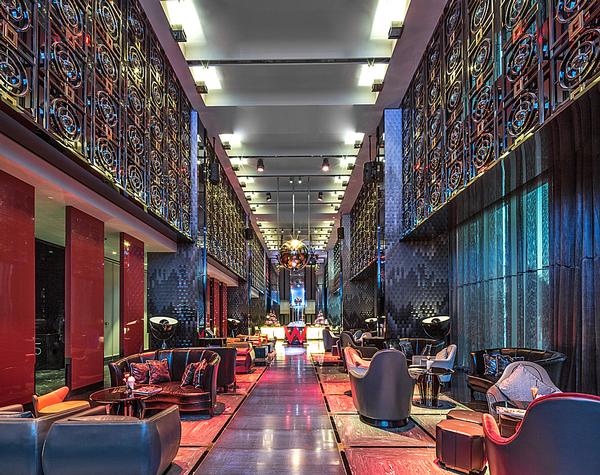
W Beijing
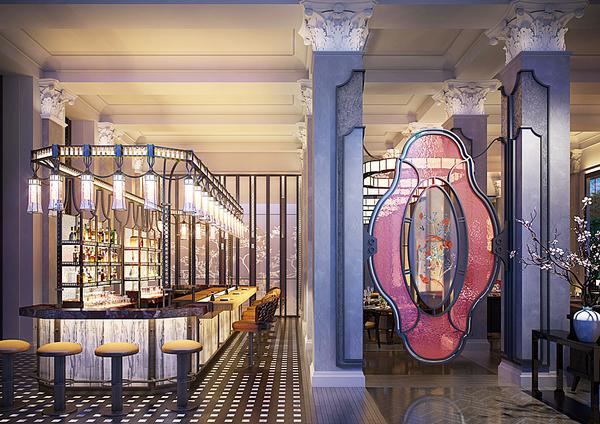
FS Shanghai at Pudong
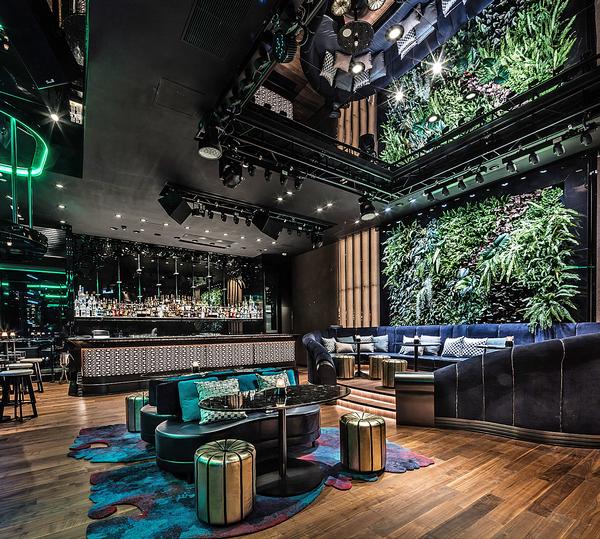
CE LA VI Hong Kong
